

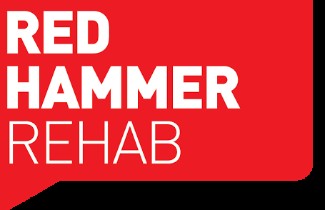

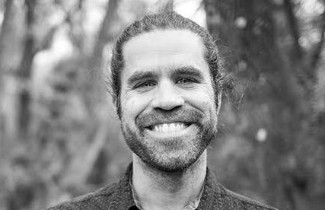
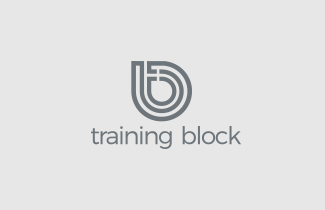
about red hammer rehab
$124
Let's be honest, how many times are we endurance athletes only hurting in one area? The extended follow up is a great way to get some TLC to multiple body parts or get that really quick insight into a smaller item that you wanted us to chat about in addition to your main injury.
$89
Not really injured but curious about how to optimize your running economy or head off possible future injuries that you heard can come from poor running mechanics? This is the session for you. We watch you run on a treadmill and then post the results on the big screen where we can show you all the t...
VIEW MORE$124
These sessions are offered at our satellite Gunbarrel location where you will be 1 on 1 with the doctor of physical therapy in a boutique gym that will have no other people present. This is a great choice if you are looking to improve performance by getting stronger or to get an expert clinician to...
VIEW MORE$89
30 minutes of 1 on 1 with the doctor of physical therapy to follow up on treatment of a known injury. All the modalities of our initial evaluation may be used, including: joint mobilization and manipulation, deep soft tissue work, cupping, dry needling, and addressing other biopsychoscial factors su...
VIEW MORE$124
1 hour, 1 on 1, just you and the doctor of physical therapy. We give you the time and space to share your story. We then take the elements of your story and combine it with examination findings to discuss and begin implementing on day 1, a plan to get you back to what you want to do. Treatment modal...
VIEW MORE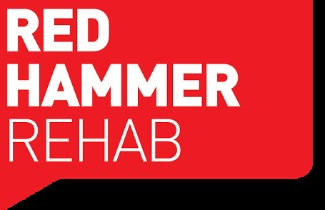
It’s fair to say that most runners today know that they need to...Read More
It’s fair to say that most runners today know that they need to do some form of strength training in order to perform better and reduce injury risk. It is also pretty common knowledge that running hills never did qualify as true strength training;) However, when I see patients in my clinic and runners in our club, there are still many misconceptions about what true strength training is and how to incorporate it into your run program. If you are training for a 5K, would you run a 20 mile long run? Probably not. If you are training for a marathon, are you going to spend lots of time doing 100m sprints with full recovery? While a little speed work does help, it would not be enough to get you acorss 26.2 miles. Let’s see if we can shed some light on what effective strength training for runners might look like. Just a heads up that I hate being told the first 2 steps of a 5 steps process and then “you’ll figure it out”, so there is a lot of info in here so you can actually safely apply the following concepts tomorrow.
Let’s start with a few definitions:
Strength: the ability to move a load a certain distance. If you can lift 150lbs off the floor and someone else can only do 100lbs, you are stronger by definition. (to improve pure strength, lifting 80-90% of 1 rep max, having 1-2 reps in reserve, doing only 3-5 sets of 3-5 reps with 3-5 MINUTES of TOTAL rest, that’s the hardest part for us endurance runners :)
Muscle Endurance: the ability to move a certain load over a certain amount of time, with more time being equated to better endurance. This time component can be measured in time or repetitions. (often achieved in the 3 sets of 20 type ranges, with a lot of reps in reserve)
Hypertrophy: in the context of our muscles this means growth in size of muscles. More size does have the ability to become more strength, though there is an optimal balance in size and the weight that it means you are carrying on your body. (lifting 8-12 reps at 70% of 1 rep max/ about 3 reps in reserve is the sweet spot here)
Power: is load (strength) over time, the ability to move a load quickly. If you and a friend both move 150lbs from floor to waist, but you do it faster, you are more powerful. You can improve power by moving the same load even faster, OR by moving a heavier load as fast as you did the lighter load. One of these variables has a lot more potential to change than the other… the amount of load, or strength. (lifting at 50% of 1 rep max but focusing on speed is crucial here. With power training, a dab'll do ya, so only a few reps and sets are needed, similar to pure strength, but even longer rest time. Also, plyometric work can shine here, think jumping tasks of any kind).
Running is mostly a sport of power trying to be sustained over time. A rare combination of power and endurance. Each stride is all about power, but we need to be able to continue this powerful single leg hop for many many miles. The goal of a good strength program should be to develop pure strength in your sagittal plane (forwards/ backwards plane) in order to make you more powerful with each stride, while also addressing decent endurance factors to keep that power coming over and over. Now, if you only weigh 150lbs, and can only squat 135 lbs., even at 30 reps (3 sets of 10 sound familiar to everyone?) there is only so much power you can generate to propel yourself forward. But if we can increase that squat to 225lbs over the course of several months, it becomes really easy to push 150lbs with each stride, and takes less energy in each stride to do that, leaving you more energy to go faster and longer. So how do we get there?
This is where most runners are not aware that their program is probably heavily under-dosing the stimulus (read weight/ load) necessary to do this. We need to have seasons where we lift heavy, just as when we go high mileage and intensity a certain number of weeks out from a key race so we have our body prepared for the rigors of race day. We want to consider the 35 rule: 3-5 sets of 3-5 reps with 3-5 minutes rest in between, done at 80-90% of 1 rep max. So if you max out your deadlift at 150lbs, you want to shoot for 4x4 at about 130lbs. You will have only done 16 total reps
Pure strength has very little to do with the ability of the muscle fibers themselves, but rather the nerve to said muscle recruiting ALL the fibers to participate. It’s like the 80-20 rule being fixed. (80% of the work is done by 20% of the group, while the other 80% of the people cheer on the first 20%). By recruiting more muscle fibers the ones already working do not have to do more work, instead they do what they have been doing, but help arrives to move the load. So when you tap into pure strength training sections of your run strength program, you usually end up with LESS soreness than in the endurance and hypertrophy stages. And note the 2-3 sets of 8-12 reps for hypertrophy… if you have started lifting heavier, but stayed in that range, you are actually in the sweet spot for putting on that bulk that I often hear is not desired. If I had a nickel for every time a runner told me they did not lift heavy because they did not want to bulk up, my 5 year old’s college fund would be near complete already.
A couple quick thoughts on benefits of pure strength training:

0

0

0
you must login
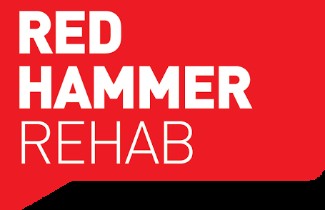
Strength routine for runners: (this is NOT an exhaustive list of all...Read More
Strength routine for runners:
(this is NOT an exhaustive list of all the best lifts for runners, but does do a good job of challenging multiple planes of movement plus addressing a couple big lifts to get stronger legs and glutes and back. Shoot for 2x/ week with this routine.
Running EMOM:
Run strength EMOM (every minute on the minute: start a stopwatch, at each minute, switch to the other side or the next exercise. When you get to the last exercise, go back to the beginning)
side lying plank (with leg lift) Right
side lying plank (with leg lift) Left
https://www.youtube.com/watch?v=ZR84WQVhdIE
OR
banded toe taps Right
banded toe taps Left
https://www.youtube.com/watch?v=fIPgv73d0gU
reverse step down Right
reverse step down left
https://www.youtube.com/watch?v=KTA7h9bJ4V8
OR
single leg deadlift Right
Single leg deadlift Left
https://www.youtube.com/watch?v=84hrdsHgDuQ&t=130s
Pallof press Right
Pallof press Left
https://www.youtube.com/watch?v=JtMok3ON0lQ
OR
Chaos pallof press to each side
https://www.youtube.com/watch?v=aCAv2_3Bas0
Reverse plank
https://www.youtube.com/watch?v=ZNAxdJ6Bt00
OR
banded SLR
https://www.youtube.com/watch?v=KYb6M2mvtAU&list=PLVD4umAhljU9mq3csn_OulWVJaMkwRRHJ&index=4
45 seconds on, 15 seconds off each exercise for a total of 14 minutes
Above is a great first half of the workout routine. Rest an honest 3 minutes, then follow with emphasis on 1 of the following lifts:
Squat: https://www.youtube.com/watch?v=U3HlEF_E9fo&t=95s
Romanian Deadlift: https://www.youtube.com/watch?v=ytGaGIn3SjE&t=421s (key difference vs. regular deadlift https://www.youtube.com/watch?v=4usyq_IHdkg&t=24s, do the Romanian version at first is recommended, but the conventional deadlift is an amazing full body load)
Bulgarian split squat:https://www.youtube.com/watch?v=-4LVK1crLSw&t=345s
Weighted hip thrust: https://www.youtube.com/watch?v=Zp26q4BY5HE
First 2 months: shoot for 3 sets of 15 with 5 reps in reserve (so if I said actually you have to do 21, you would say, you could do 20, but not 21). You can often figure out what this is using a 1 rep max calculator. On your first day, on the last set, go for an As Many Reps As Possible (AMRAP) round and see how many you can do with whatever weight you chose. Then use this calculator to help dial in roughly how much weight you should do to only have about 5 reps in reserve:
https://strengthlevel.com/one-rep-max-calculator
(just know that if you crank out a LOT of reps, this becomes less accurate the more reps you get, so hitting more than 25-30 reps means you need to try again some other day).
After 2 months: shoot for 2-3 sets of 8-10 reps at 2-3 reps in reserve to shoot for a bit more of a strength gain with some hypertrophy. If you are new to this kind of intensity with your strength programs, I recommend one 2 month session here. After this…
Think about the 35 rule: 3-5 sets of 3-5 reps with 3-5 minutes rest at a load that feels like there is 1 rep in reserve. This is a great place to build pure muscular strength with less likelihood of adding a lot of bulk. This should be the bulk of the strength work on a key lift each session. The low reps total (4x 3 reps is only 12 total reps), leaves your muscles strained (as in challenged, not injured) and therefore stimulated for responding by getting stronger, without too much load and fatigue overall so you can hit the big mileages in your running program.
Rotate throught about 2 months of each set of paramters for the big lift (3x15, 3x 8-12, 3-5x3-5).

1

0

1
you must login
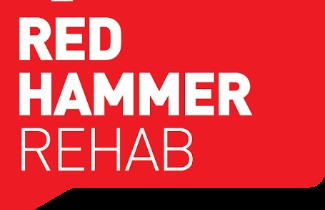
This week I want to take some time to talk about recovery options afte...Read More
This week I want to take some time to talk about recovery options after runs/ throughout the week or the course of a training cycle. I get asked by a lot of my patients and fellow runners "what do you think of ... rolling, massage guns, dancing counterclockwise 3 times every hour," or whatever other recovery craze they have recently heard and want to try. Here are the ones that I most often recommend. And remember, your recovery is almost more important than your workouts, because if you don't recover, you will run out of steam and break down thus being unable to do any more workouts.
Tier 1: the most bang for your buck
- SLEEP!!!! TAKE A NAP!!!! Note the irony that this won't cost you a penny and gives you the best quality recovery. Our bodies do so much physiologic healing in our sleep. They also take the events of the day and move them from short term storage to long term storage during sleep. Sleeping is easily the best sports performance enhancing drug nobody is talking about. (credit Dr. Matthew Walker, Why We Sleep).
https://www.amazon.com/Why-We-Sleep-Matthew-Walker-audiobook/dp/B0752XRB5F/ref=sr_1_2?crid=1Q7OZZNFMLIRA&keywords=why+we+sleep+book+matthew+walker&qid=1645157445&sprefix=why+we+sleep%2Caps%2C680&sr=8-2
- EAT!!! Your body is just like a car, it needs fuel to work, and if you just ran a good hard workout or a longer than ever run, you need to stop by the gas station and top off the tank. Shoot for something with a good blend of carbs and protein, especially within the first 15-30 minute after a hard workout for best results. There is a bunch of science about "ideal ratios" but sometimes I think we make this too complicated. Get some calories, and make sure there are some carbs and protein. I love a spoonful of white chocolate peanut butter and some chocolate chips. Well, actually like 3-5 spoonfuls!!
Tier 2: go with the (blood) flow
- light heart rate increase with low impact. This is why we suggest the short runs in the week, They help flush out the byproducts from the big runs (the most commonly known of which is lactic acid, but there are so many). Getting a short little spin on a bike, an easy rowing session on the ergometer, an easy run, or a nice hike.
- some sort of flow/ mobility based yoga can help keep joints lubricated and flexible with little strain/ effort for your body.
Tier 3: the more passive stuff (stuff done to you more than by you). Still good, even very good, but never as good as the stuff you do for yourself like above.
- massage: I recommend once/ month if you can afford it in your budget and schedule, especially if committed to a decent 13.1 or longer training block. Recent research shows it may not be doing all the things we once thought, but the number of people who feel recovered after one is irrefutable. There sometimes needs to be room for the "we don't actually know what it is doing, but boy does it work". I believe there is huge power in human touch and that is part of the "healing" that massage can bring.
-- self massage tools such as foam rolling, massage guns, and pressure boots can all fit in this category.
Hot bath (with epsom salts): the power of relaxation and warmth to get vasodilation (wider opening of blood vessels) helps flush out the system. This can be done as often as you like. Once in a while a glass of wine to help calm can be a nice touch.
ice bath: We freeze the heck out of our legs and then what does our body do? Try to warm them back up with an awesome power wash of blood flow that flushes out all those byproducts from muscle use. Ice bath routine: 20 lbs of ice in the tub with cold water deep enough to cover the thighs when sitting with legs out in front of you. Have 2 towels going in the dryer for a bit beforehand, with some tea steeping right before you get in the tub. Try to last for 3-5 minutes. Have nothing to do for at least an hour afterward, but preferably an hour recovery, then bed time. Sit for an hour with towels around legs and sipping on tea. Then head to bed. Should feel quite good for 2-3 weeks, then that heavy leg feeling again, so do this every 4 weeks. Ladies can do it even more often, especially in warmer months as their physiology responds really well to cooling core temperature with this. Do it too often, though, and the effects become a little less dramatic, much like no longer getting scared at the scene in the horror movie that used to get you every time, but now you've become desensitized to it. So I recommend doing this no more than once/ week or two weeks. A cold shower is fine to do more frequently, but this level of cold we want to save for more rare occasions.
So there are some recovery ideas that I have seen evidence for and good results over the last 14 years as a physical therapist. Try some of these ideas in the next few weeks if you have been slacking on your recovery.

1

0

0
you must login
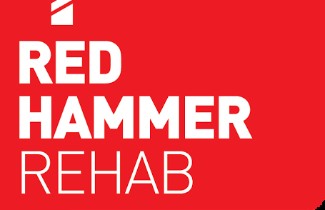
Hello Rev Runners! Hope this email finds you doing well and excited fo...Read More
Hello Rev Runners! Hope this email finds you doing well and excited for this upcoming session! In this email, I want to go over our paces, why we do them, and how to help get yourself into the correct pace during each workout. Each pace has a different scientific reason behind it, and that is why we talk about them so much in our group runs and during the workouts.
With that in mind, let’s start with Easy pace. An easy pace is quite slow, usually around a 2-3/10 on an effort scale where 0 is sitting on the couch and 10 is all out for 15-20 seconds. Another way to tell if you are at easy pace is to carry a conversation/ tell a 10 minute story to your running partners without needing to pause due to being out of breath. If you are alone, try singing a song out loud to yourself. Either a song with long held notes, or something with quick verses and lots of words. This will help reveal if you are needing those breaths or not. We do roughly 80% of our runs at this pace. This pace builds the sheer number of mitochondria in our cells. Mitochondria are the energy centers of the cells, so having more energy centers means having more possible energy on race day. Easy running also helps to get miles/ training in without beating up the body like the hard runs do, reducing injury risk. Not only that, it actually helps heal, as the gentle use of the muscles gets blood flowing in them to flush out byproducts like lactic acid and hydrogen ions that have built up at the last hard effort.
Marathon pace: this pace is usually close to a minute, or even more faster than easy. This pace is still pretty low on the effort scale, maybe more like a 4-5, but you could tell that by 26 miles, it is going to be exhausting. Typically this pace has a bigger gap vs easy pace if you are a faster runner, and it becomes harder to tell the difference between easy and marathon if you are a slower runner.
Half marathon pace: this pace is about 10-15 seconds faster than marathon pace. No real details needed other than that. Likely pushing that 5/ 10 effort for sure, but still quite manageable for double digit miles.
Tempo pace. IN REV RUN this pace means 10 mile race pace. Some other programs use this term to refer to your target race pace, especially for 13.1 and 26.2, but we are asking you to consider this a 10 mile race pace. This pace is roughly 10 seconds per mile faster than 13.1 pace.
All 3 of these paces work to make the mitochondria in the cells work more efficiently. This allows them to make energy quickly, and with less and less byproduct building up in the cells.
Then we have the slightly faster stuff. 10K pace is another 10-15 seconds faster than tempo, followed by 5K pace which is another 10-15 seconds faster than 10K. These paces start to really push the effort scale to more like a 6-7/10. These paces make the mitochondria learn to be efficient while under pressure, which they will need to be on race day.
Here is a sample of what these paces might look like to a runner:
2 mile time trial: (let’s say 9:00/ mile)
5K pace: add 10-15 seconds (9:15/ mile)
10K pace: add another 10-15 seconds (9:30/ mile)
tempo/ 10 mile race pace: add another 10 seconds (9:40/mile)
Half marathon pace: add another 10-15 seconds ( 9:55/ mile)
Marathon pace: add one more 10-15 seconds (10:10/ mile)
Now the easiest thing to do is ask yourself: “I am supposed to be running 10K pace… could I honestly hold this for 6.2 miles?”
Hopefully this gives you some insight into why we have so much detail in our pace work, and why each pace is important.
So if it has been a while since you have had a run at one of these distances mentioned above, maybe take a day soon to go out and do a 2 mile or 5K time trial and just see how well you can run it. That can tell you a lot about how to run to your current level of fitness and reduce injury risk and improve your performance and enjoyment of your running. Look for a follow up email on this concept coming soon :)

0

0

0
you must login
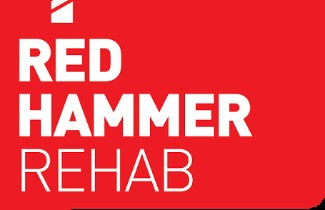
Full disclosure, I am NOT a nutritionist. This is basic knowledge as a...Read More
Full disclosure, I am NOT a nutritionist. This is basic knowledge as a physical therapist that sees research on the role of nutrients in healing and performance, and as a running coach. Getting into very specific timing and meal plans and specialty diets SHOULD be done with a registered dietitian or a nutritionist/ sports specific nutritionist!!
Hello Loco RevRunners!!
I thought this week we should talk about fuel/ nutrition for us all. I think the first thing to convey is that our relationship with food can be varied and can be complicated. It is important that this is understood up front. With that being said, if we can understand why we as a species eat, it can help frame the rest of the context of this topic. We eat because much like a car, we can only go so far as the fuel we have in us. We require fuel just to idle, let alone to push the RPMs with a multiple mile, 60+ minute long run. If we can keep that in mind, it can help us rethink our relationship with food, at least as it relates to if we are going to exercise. Just as you would not see that your car has only 20 miles worth of fuel left and still try to get to Colorado Springs without filling up, so should we not try to get a max effort push of our body if we know the fuel gauge is close to E.
Calories are the main measurement we use to monitor how much fuel we have on board. Recommendations are all over the board, and vary based on daily activity level (maybe you have a very active job, or one that you sit all day… this will change your demands for fuel) as well as individual metabolic processes. That being said, it is pretty rare that anyone needs less than 1500 calories in a day, and pretty rare to need more than 2000 just to go through your day. Then we need to add in the fact that our exercise is going to need fuel. If you guess that you will use about 100 calories for each mile you run, you will at least be in a general ballpark of how much fuel you will need either before, or to fill up after, depending on what you do best on. With current technology you can dial this number in even more accurately by entering height, weight, etc. into fields like a Garmin app. They use algorithms to help dial in calorie expenditure that tend to be pretty decent. I would say that most, though certainly not all, of us tend to actually UNDER consume the calories we need to sustain our daily existence plus exercise. This can be one of the first things I would look at if you are finding it difficult to finish the workouts strong. It could simply be that you literally ran out of fuel.
Protein: This is probably the most important macro nutrient that I find runners, and really lots of people under consuming. Yes, we use carbohydrates and fats for our energy systems as endurance runners. However, it is protein that gives our muscles mass and provides so many important vessels to carry important chemicals through our body. It is also protein that is so crucial to regeneration of tissue after working out: aka “recovery” First some quick math: 1kg is the same as 2.2 lbs. Most recommendations are in grams/ kg of body weight, so knowing this can help you out with conversions, but I am about to make that rather simple for you. From the Mayo clinic:The recommended dietary allowance to prevent deficiency for an average sedentary adult is 0.8 grams per kilogram of body weight… note the word SEDENTARY!!! (emphasis mine)
This would mean that a 150lbs person would need 54g of protein (roughly ⅓ their weight in pounds) if sedentary. However, we are running. I recommend at least ¾ of your weight in grams of protein/ day. So this 150 lbs athlete would want to take in at least 100g/ day. If you are strength training, you want even closer to 1g of protein for every pound of weight, so 150g of protein for the 150 lbs athlete.
A few sources for you to reference:
https://pubmed.ncbi.nlm.nih.gov/22150425/
https://www.eatright.org/fitness/sports-and-performance/fueling-your-workout/protein-and-the-athlete#:~:text=The%20Academy%20of%20Nutrition%20and,the%20day%20and%20after%20workouts.
https://www.verywellfit.com/sports-nutrition-protein-needs-for-athletes-3120669
A quick word about fats: Some amount of saturated fats are really good for us. In particular stuff similar to coconut and olive oil type fats, as these line the coatings of our nerves and help speed up transmission of neural signals and all the healthy stuff that we want for our brains. Of course do not go to town on twinkies, but having good fatty foods is essential to optimal health and performance.
I do not have the knowledge base to go in depth on micro nutrients, but know that getting a good mix of fresh, or frozen veggies is a really easy way to get a lot of those. (I recently learned that frozen veggies can be even better due to being frozen much closer to harvest than the “fresh” stuff sitting under the grocery store lights for however long before you buy them)
I encourage you to track calories and protein for even just 1 day that is most like a typical day for you to see if you think you are around the right amount of caloric and protein intake. From there the basic goal is to shop for a variety of foods throughout the grocery store, eating food rather close to its natural form as we can, and make sure to balance out getting enough protein and calories to fuel our effort and then our recovery.
Hit me up with questions or comments. And I know at least a couple of our members are well suited to chat about nutrition even more so than I am. Feel free to chime in if I am massively misrepresenting anything here!

0

0

0
you must login
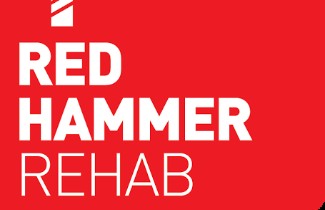
Hello team Longmont! Thought I would touch on running techniq...Read More
Hello team Longmont!
Thought I would touch on running technique and form in today's email. The following podcasts has some great concepts to consider for good running form and technique.
https://podcasts.apple.com/us/podcast/the-strength-running-podcast/id1170932252?i=1000512525839
(about 45 minutes)
Episode 934 - Why does cadence matter?
#PTonICE Daily Show
Dr. Jason Lunden // #FitnessAthleteFriday //
Listen on Apple Podcasts: https://podcasts.apple.com/us/podcast/ptonice-daily-show/id1088698598?i=1000517408189
(about 15 minutes)
And a couple decent videos with tips:
https://www.youtube.com/watch?v=PJvNOlFeuQA
https://www.youtube.com/watch?v=brFHyOtTwH4
Of course there is also the possibility we are making this all too complicated:
https://www.outsideonline.com/health/running/running-biomechanics-research-2021/
A few thoughts from my end:
The bulk of the research indicates that hitting the ground harder at the very first moment of contact (peak initial impact forces), and being on it for longer is what will increase your injury risk. With that in mind we suggest considering some fo the following:
- try to land with your foot more underneath of you, and less in front of you. Have a friend video you running across the camera/ from the side. Watch the video in slow motion. As soon as your foot first lands flat on the ground, hit pause. draw a line up from the base of your 5th toe, perpendicular to the ground. this line should go into the knee and the chest, not in front of them.
Consider a higher cadence:
sub 10 minute miles and faster, try for around 170-175 for easy pace runs, 175-185 for most speed intervals
sub 11 and beyond move the dial back a bit to more of 160-170 for easy and 165-175 for marathon pace or faster.
These higher cadences make sure your foot comes on and off the ground a bit more quickly reducing stance time.
Foot strike: Heel first? toes? midfoot? Actually this component is less important to worry too much about AS LONG AS the foot is landing under you and not in front of you (see tip #1). This landing location does tend to cause a more midfoot landing in general, but again that is not critical. I do like the way the podcast chap describes trying to land on a tripod of the base of your 1st toe, base of your 5th toe, and center of your heel which engages all the spring shocks absorption and power return available in most feet.
fwd lean of the body: this lean helps get feet under us in landing. BUT it comes from the ankles, not the waist. imagine your body is a 2x4 and we tipped it over from the top. right before you fall on your face, start taking steps. 2 of my favorite cues for this:
- drive elbows back (which will thrust your trunk/ torso forward)
- focus on the part of your running stride of foot about to leave the ground to kicking your heel towards your glutes. Butt kicker variation #2 is particularly good for this:
Running form drills:
https://vimeo.com/412577081/10d3967ff1
Have fun with these ideas, and as always, feel free to reach out with questions, updates, etc.

0

0

0
you must login
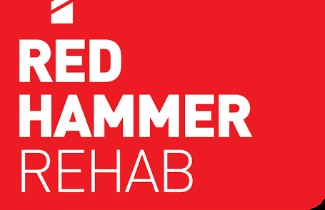
“Run to your fitness, not your talent” This is what coach...Read More
“Run to your fitness, not your talent”
This is what coach Jon Poag (coach of a top 10 DII cross country team) was saying to his athlete I was treating in October 2020. I always love having other ways to say things so that eventually the concept really sticks. This phrase really hits the nail on the head for how to approach your training to reduce injury risk and peak at the right time for your target race that is months away. What we are saying here is the following:

0

0

0
you must login
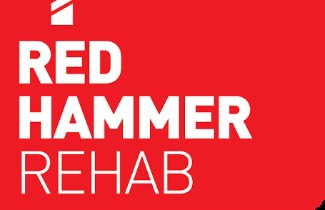
What’s up squad!! Hope you are really getting into the groove of...Read More
What’s up squad!! Hope you are really getting into the groove of the season at this stage. We have hit up one 3 week build with a week 4 recovery week, and this week we should be on or close to our next recovery week. I thought this might be a good time to chat about a subject that really tackles where the rubber meets the road… our shoes!
A brief history: most running shoes before around 2010, most running shoes were built with a cushioned heel to absorb the shock of a heel strike that would presumably roll into the rest of the stride. This resulted in a shoe that had a heel that was thicker than the forefoot, leading to what is called “drop”. Drop, often listed in millimeters, is the difference in how high your heel is compared to your forefoot. When you are barefoot, you are at 0mm drop. When one is wearing a 1” high heel, they are in a 1” (roughly 22mm) drop. The majority of those pre 2010 shoes were at a 12mm drop.
Why this 2010 time frame you ask?
A misunderstood text: In 2009 Christopher McDougall wrote the now infamous book, “Born to Run”. I HIGHLY recommend the book! It is fascinating and describes how we as humans are the only species designed to run literally for days if we had to. But a few misconceptions came out of the book, most notably the following 2:

1

0

0
you must login
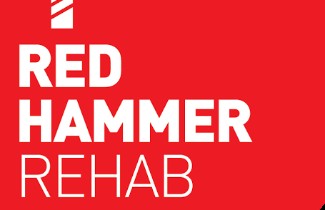
OK team!! I know you have been SO eagerly awaiting what happens to our...Read More
OK team!! I know you have been SO eagerly awaiting what happens to our protagonist, the shoe, from last week’s episode! So without further ado…
Let me start with this recent research article that came across my feed this summer 2022:
https://pubmed.ncbi.nlm.nih.gov/35356094/
Key take home summary for those that want the answer right away:
"In the absence of a clearly supported paradigm, we propose that in general clinicians should recommend footwear that is lightweight, comfortable, and has minimal pronation control technology".
Then just this week this Cochrane review came out: https://www.cochranelibrary.com/cdsr/doi/10.1002/14651858.CD013368.pub2/full
A cochrane review ranks among the best level of evidence one can get as theyscour ALL articles related to the topic and have strict criteria for what makes a good, unbiased, reliable study. Their take home?
Most evidence demonstrates no reduction in lower‐limb running injuries in adults when comparing different types of running shoes. Overall, the certainty of the evidence determining whether different types of running shoes influence running injury rates was very low to low, and as such we are uncertain as to the true effects of different types of running shoes upon injury rates.
So, take this onfo in, but remember to try on stuff and see what feels most comfortable. Then be smart about how much you ramp up the training, as that seems to have much more correlation to running injuries :)
3 main kinds of road shoes:

0

0

0
you must login
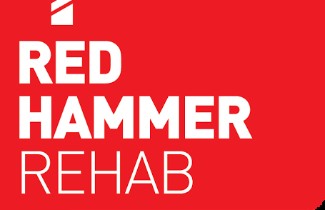
Hey team! Hope all is going well. Today's topic is related to how...Read More
Hey team! Hope all is going well. Today's topic is related to how to manage soft tissue injuries and pains that come during our training. The fact is that searching for PRs in the running world is usually a very thin line between pushing hard and pushing too hard. Minor strains are very likely when working through a training block for a key race. When this happens, it is important to know what to do to get back on your healthy feet as soon as possible. All you need to do is give that minor injury peace and love. Read on for more details. Also, I know for fact at least one of the very first Training Block Newsletters also had this info, so yeah, it's legit adn good stuff.
On to the topic at hand: Not long ago, a runner of mine told me they read in the Denver Post an article about not using ice when you have a minor soft tissue injury. This is actually VERY much in line with what I have learned over the past couple years. The original "founder" of the Pressure, Rest, Ice, Compression, Elevation (PRICE) mnemonic has said he made that based on what the science of the late 70's early 80's had to offer. Had he known then what we know today he NEVER would have put the Rest or Ice in there.
https://www.washingtonpost.com/national/health-science/the-method-you-learned-for-treating-an-ankle-or-knee-sprain-is-probably-wrong/2016/05/27/f32e86ca-8c9b-11e5-ae1f-af46b7df8483_story.html
So what should we do now? Well, my friends, just like the rest of the world, your soft tissue injuries and inflammation need PEACE & LOVE. Check out this blog from the British Journal of Sports medicine:
Peace & Love for soft tissue injuries:
https://bjsm.bmj.com/content/54/2/72
Protect the inury by maybe not using that limb so much, a brace for a day or 2, or a cane or crutch for a short time
Elevate the limb to let gravity help the one way valves that help get rid of used fluids (veins) and vyproduct from inflammation and use (lymphatic system)
Avoid anit-inflammatories... this is a hard one for many, but think about it; as long as we have been a species on this planet, long before the advent of NSAIDs, how did our body naturally try to heel itself? Why are we in such a hurry to interrupt a 3 phase 6 week process that should naturally be there? If pain really is an issue for things like sleep, se if maybe a tylenol/ Acetaminophen can do the job without affecting the inflammation so much.
Compression also helps push fluid along the lymphatic system, and reduces how much can build up in the first place.
Educate: let yourself be educated by the provider you trust.
as soon as possible, get into the LOVE
Load the tissue, even if it can only tolerate 10-15% of what it normally would. This helps the tissue learn/ relearn what its function is and how to best do that, as well as promotes blood flow to the specific area
Optimism: careful not to fall into toxic positivity, if this injury really sucks, that is okay to think about and work with. And, when some positive signs happen, try to appreciate them too.
Vascularization: blood flow for the win!!! In order of most effective to elicit blood flow to a specific tissue: use that tissue, get your heart rate up, ...big gap.... all the other things (also very good, but the first two win by a mile) such as heat, massage, dry needling, etc.
Exercise. Usually, if you do the Exercise, the L, O, and V take care of themselves :)
And here is another read about the virtues of more heat, less ice
Why I almost always choose heat:
https://www.physio-network.com/blog/ice-for-acute-injury/?ck_subscriber_id=813086703#a_aid=zlresearch
This does NOT mean never ice, but probably pretty rare. Hope you all enjoy being challenged on some old norms.As always, reach out to your physical therapist to see how they can help keep things on schedule as best as possible.

0

0

0
you must login
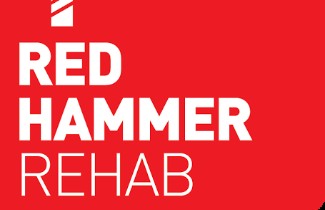
I had a wonderful run today in the first actual snowfall of any signif...Read More
I had a wonderful run today in the first actual snowfall of any significance of the winter season coming up. It had me thinking of what I would put in my “winter running checklist” We will go from head to toe here and just throw out some ideas of things I find helpful for safely, warmly, and therefor enjoyably getting out in the cold, sometimes snowy winter weather.
Head- lamp that is… headlamps are a MUST for visibility, and I don’t mean you being seen, I mean you being ABLE to see. This time of year means more runs in darker conditions and having enough light to see by is critical. See this video for good details on considerations for headlamps:
https://www.rei.com/blog/hike/how-to-choose-headlamps
Pro-tips

0

0

0
you must login
about red hammer rehab
Training Block was created with a mission to support and empower runners, in order to elevate our sport. We do so by giving runners access to a network of local sport performance providers, who provide runners with the care they need from coaching, physical therapy, massage, strength training, and more. We also give providers an easy way to connect with each other and share articles, videos, and other resources that benefit runners and providers alike. For every service booked through Training Block, we donate 10% of our revenues to Training Block’s Elite Athlete Fund, which sponsors elite runners who do not have professional contracts and need financial support for racing at their highest level.
Copyright © 2024 Training Block. All rights reserved.
Refer a friend and get $5 discount on order!
This is very helpful, I will be sure to incorporate these exercises into my routine. How often should I be doing these exercises?